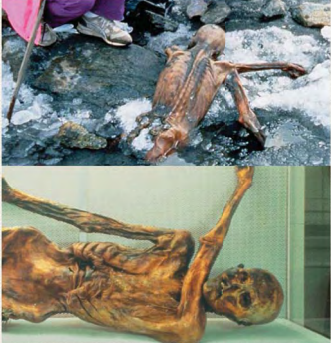Chapter 1 - The Peopling of the World
1.1 - Human Origins In Africa
Archaeologists are specifically trained scientists who investigate the history of prehistoric peoples in the same way as detectives do.
- By excavating and researching the traces of early settlements, they learn about the early people.
Human-made artifacts, such as tools and jewelry, are known as artifacts.
- These artifacts could reveal information about how people dressed, what they did for a living, or how they worshipped.
Anthropologists are scientists who study culture or a people's unique way of life. At archaeological digs, anthropologists examine the items.
They discovered prehistoric footprints preserved in volcanic ash in 1978 that resembled those of modern humans.
The opposable thumb had already developed in these early hominids.
- The tip of the thumb can cross the palm of the hand in this manner.
- Picking up small objects and manufacturing tools necessitated the use of the opposable thumb.
These are thought to have happened during the Stone Age, according to scientists.
- It lasted for a very long period. The Old Stone Age, also known as the Paleolithic Age, spanned from around 2.5 million to 8000 B.C. and was the first and longest period of the Stone Age.
- This is when the first stone chopping tools appeared.
Homo erectus, according to some anthropologists, was a more intelligent and adaptable species than Homo habilis.
- People in Homo erectus developed technology—methods of applying information, tools, and innovations to satisfy their needs—by using their intelligence.
Quarry workers in Germany's Neander Valley discovered fossilized bone fragments while working for limestone in 1856.
- These were the remains of Neanderthals, whose skeletons had previously been unearthed in Europe and Southwest Asia
1.2: Humans Try To Control Nature
- Nomads were extremely mobile individuals that traveled from place to place in quest of fresh food sources.
- Hunter-gatherers are nomadic societies that rely on hunting animals and harvesting plant items for food.
- Inventing tools allowed prehistoric hunter-gatherers, such as nomadic bands of Cro-Magnons, to improve their food supply.
- Hunters, for example, developed specific spears that allowed them to kill wildlife from greater distances.
- Food gatherers used digging rods to break plants loose from their roots.
- Early modern people's tools reveal how they addressed their survival demands.
- However, it is via their artistic efforts that their world comes to life the most.
- Both men and women wore seashell necklaces, lion teeth, and bear claws. Mammoth tusks were crushed into polished beads.
- They made miniature, lifelike sculptures of the creatures that lived in their environment as well.

 1.3 - Civilization
1.3 - Civilization
- Ancient inhabitants in larger villages created intricate irrigation systems to farm more land and produce more crops.
- Some locals were able to pursue other careers and develop skills other than farming as a result of the food surpluses.
- Pottery, metal objects, and woven cloth were among the valued new products generated by people who learned to be crafters.
- People who became traders, on the other hand, benefited from a wider choice of products to exchange—craftwork, grains, and a variety of raw resources.
- Traders could also move more products over longer distances because of two major inventions: the wheel and the sail.
- The social structure of village life was influenced by a more complicated and affluent economy.
- The construction and operation of big irrigation systems, for example, necessitated the participation of a significant number of people.
- Social classes with different wealth, power, and influence began to emerge as other particular groups of workers formed.
- The demand for more specialized professionals, such as traders, government officials, and priests, increased as cities flourished.
- Food surpluses allowed for specialization, or the development of talents for a certain type of labor.
- Because of the plentiful food supply, several people were able to specialize in invocations other than farming.
- The increasing populations of early towns necessitated the establishment of government or a system of rule.
- Leaders evolved in civilizations to keep people in line and establish rules. Government is an example of an institution, which is a long-term organizational pattern in a community.
- Another feature of civilization is complex institutions, such as government, religion, and the economy.